The University of Glasgow is working with EADS Innovation Works (EADS IW) on developing a revolutionary storage system for hydrogen that would pave the way for using hydrogen as a clean alternative to hydrocarbon-based fuels in aeroplanes.
Jan 28th, 2011
Read more
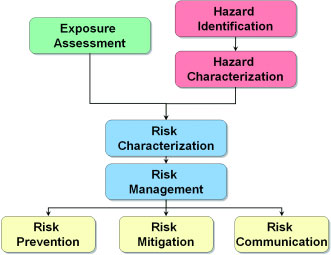 The rapid development of nanotechnology has increased fears about the health risks of nano-objects. Are these fears justified? Do we need a new discipline, nanotoxicology, to evaluate the risks? Harald F. Krug and Peter Wick of the Swiss Federal Laboratories for Materials Science and Technology discuss these questions in the journal Angewandte Chemie.
The rapid development of nanotechnology has increased fears about the health risks of nano-objects. Are these fears justified? Do we need a new discipline, nanotoxicology, to evaluate the risks? Harald F. Krug and Peter Wick of the Swiss Federal Laboratories for Materials Science and Technology discuss these questions in the journal Angewandte Chemie.
Jan 28th, 2011
Read more
Today, U.S. Senator Charles E. Schumer released a letter to Energy Secretary Steven Chu, urging him to approve SEMATECH's application to form a new photovoltaic manufacturing consortium with support from the Department of Energy's Photovoltaic Manufacturing Initiative.
Jan 28th, 2011
Read more
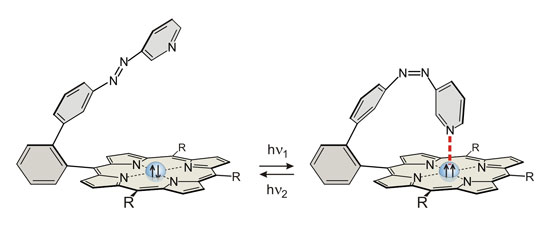 A German research group has succeeded for the first time in directly controlling the magnetic state of a single molecule at room temperature.
A German research group has succeeded for the first time in directly controlling the magnetic state of a single molecule at room temperature.
Jan 28th, 2011
Read more
Researchers in Japan have developed a new technology for the production of 0.5 nm ultra-thin high-permittivity gate insulating films.
Jan 28th, 2011
Read more
Einen Ueberblick ueber die aktuelle Literatur im Bereich der Nanotechnologie gibt der neue 'Sonderinformationsdienst Nanotechnologie', den die Fachbibliothek der Bundesanstalt fuer Arbeitsschutz und Arbeitsmedizin (BAuA) jetzt veroeffentlicht hat.
Jan 28th, 2011
Read more
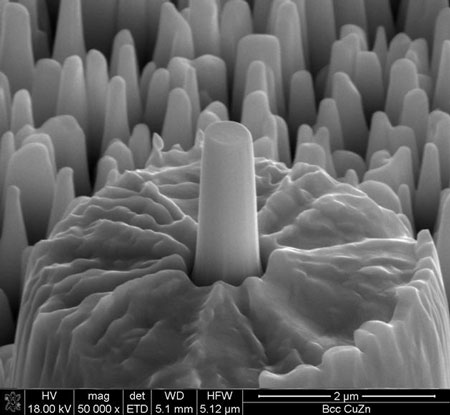 Structured surfaces have special properties. It would be desirable to make these properties switchable. This, for example, would allow for friction and adhesion to be specifically switched on and off on metallic surfaces. How to train structured surfaces for this effect has been under investigation by the junior research group 'Metallic Microstructures' at the Leibniz Institute for New Materials since January 2011.
Structured surfaces have special properties. It would be desirable to make these properties switchable. This, for example, would allow for friction and adhesion to be specifically switched on and off on metallic surfaces. How to train structured surfaces for this effect has been under investigation by the junior research group 'Metallic Microstructures' at the Leibniz Institute for New Materials since January 2011.
Jan 28th, 2011
Read more
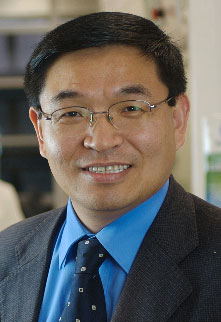 Chinese Academy of Sciences (CAS) conferred its Award for International Cooperation in Science and Technology for 2010 at CAS' annual conference held January 25-27, Beijing.
Chinese Academy of Sciences (CAS) conferred its Award for International Cooperation in Science and Technology for 2010 at CAS' annual conference held January 25-27, Beijing.
Jan 28th, 2011
Read more
The forum aims to bring stakeholders together to aid policymakers establish a regulatory framework for the safe commercialisation of nanotechnologies.
Jan 28th, 2011
Read more
 On team of 9-14 year old kids participate in the First Lego League competition with research in the field of biomedical engineering on how to prevent stroke-causing blood clots in the brain using nanotechnology.
On team of 9-14 year old kids participate in the First Lego League competition with research in the field of biomedical engineering on how to prevent stroke-causing blood clots in the brain using nanotechnology.
Jan 27th, 2011
Read more
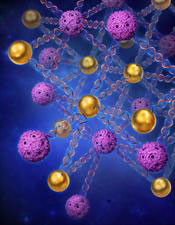 Scientists have created a diamond-like lattice composed of gold nanoparticles and viral particles, woven together and held in place by strands of DNA. The structure - a distinctive mix of hard, metallic nanoparticles and organic viral pieces known as capsids, linked by the very stuff of life, DNA - marks a remarkable step in scientists' ability to combine an assortment of materials to create infinitesimal devices.
Scientists have created a diamond-like lattice composed of gold nanoparticles and viral particles, woven together and held in place by strands of DNA. The structure - a distinctive mix of hard, metallic nanoparticles and organic viral pieces known as capsids, linked by the very stuff of life, DNA - marks a remarkable step in scientists' ability to combine an assortment of materials to create infinitesimal devices.
Jan 27th, 2011
Read more
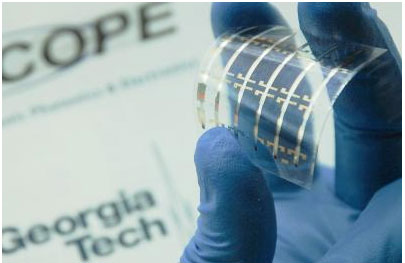 Researchers from the Georgia Institute of Technology describe a new method of combining top-gate organic field-effect transistors with a bilayer gate insulator. This allows the transistor to perform with incredible stability while exhibiting good current performance. In addition, the transistor can be mass produced in a regular atmosphere and can be created using lower temperatures, making it compatible with the plastic devices it will power.
Researchers from the Georgia Institute of Technology describe a new method of combining top-gate organic field-effect transistors with a bilayer gate insulator. This allows the transistor to perform with incredible stability while exhibiting good current performance. In addition, the transistor can be mass produced in a regular atmosphere and can be created using lower temperatures, making it compatible with the plastic devices it will power.
Jan 27th, 2011
Read more
Nanosilber ist keine neue Erfindung der Nanotechnologien, sondern bereits seit mehr als 100 Jahren in verschiedenen Produkten im Einsatz. Dies zeigt eine neue Empa-Studie. Schon damals wurde die antimikrobielle Wirkung winziger Silberteilchen genutzt, die als 'kolloidales Silber' bekannt waren.
Jan 27th, 2011
Read more
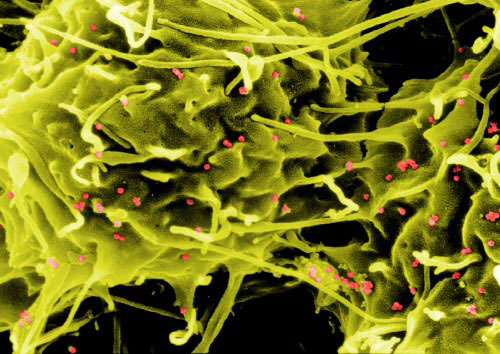 In future, Empa and the Cantonal Hospital St. Gall will work together more intensively in various fields of research and development in medicinal and medical materials. In addition to previous cooperative projects in the field of human stem cells, current research topics such as nano-safety, immunology and implant development will also be tackled.
In future, Empa and the Cantonal Hospital St. Gall will work together more intensively in various fields of research and development in medicinal and medical materials. In addition to previous cooperative projects in the field of human stem cells, current research topics such as nano-safety, immunology and implant development will also be tackled.
Jan 27th, 2011
Read more
A paper published in the January issue of the journal Nanomedicine could provide the foundation for a new ovarian cancer treatment option -- one that would use an outside-the-body filtration device to remove a large portion of the free-floating cancer cells that often create secondary tumors.
Jan 27th, 2011
Read more
Researchers in Japan have developed a ternary material with a core-shell structure consisting of multi-walled carbon nanotubes, an ionic liquid, and a conducting polymer. It was found that, when used as the counter electrode of dye-sensitized solar cells, the material exhibits photoelectric conversion efficiency as high as that of platinum.
Jan 27th, 2011
Read more









 Subscribe to our Nanotechnology News feed
Subscribe to our Nanotechnology News feed